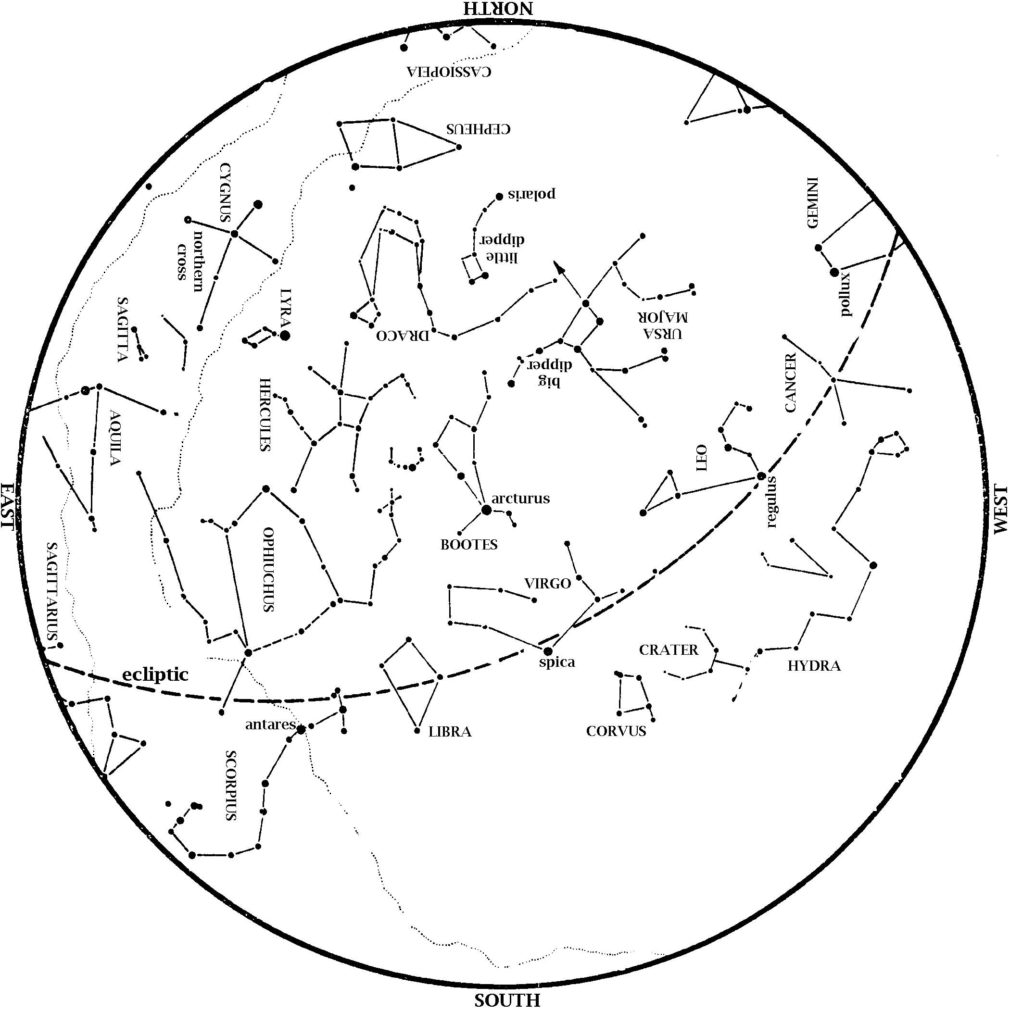Mercury continues an excellent apparition for the first half of June. Look for it low in the sky at dusk, over the point of sunset. Mercury is highest June 4-5, then gets lower and dimmer until it is lost in the Sun’s glare by June 15.
Mars is higher in the morning sky each day this month. Look low in the southeast at dawn as Mars pulls away from Jupiter and Saturn. Mars also continues to brighten, outshining most stars in the sky by June 30.
Jupiter is slightly higher the morning sky each day this month. Look low in the southwest at dawn, especially towards the end of the month.
Saturn is also in the morning sky. Look about 5.5 degrees to the left of Jupiter. By month’s end, both Jupiter and Saturn rise in the southeast by 9:45 pm, soon after twilight ends.
Venus is out of sight until mid-month. (It is almost directly in line with the Sun on June 3). After about June 15, you can begin looking for it low in the east northeast at dawn.

At 4:43 pm on Saturday, June 20, the Sun is directly overhead as seen from the Tropic of Cancer. This means that Earth’s north pole is tilted as much as possible towards the Sun, making this our summer solstice. On this date the midday Sun is as high as possible in our sky—virtually overhead—and we have more daylight than on any other day of the year. Below the equator, the opposite is true. There, the midday Sun is as low as possible in the sky, and there is less daylight than on any other day of the year. For them, June 21 is the winter solstice.
The Big Dipper is above the North Star, with its handle pointing up. From that handle, you can ‘arc to Arcturus’ and then ‘speed on to Spica’; those stars are in the south at dusk. Arcturus is the fourth brightest star in the night sky, but the brightest one we see from Houston during all of June or July. (In summer, numbers 1 and 2 rise only in daylight hours for us, while #3 never rises in Houston.) Leo, the Lion, is high in the west at dusk.
Antares, brightest star of Scorpius, the Scorpion, is in the southeast, with the ‘teapot’ of Sagittarius rising behind it. The Summer Triangle has fully risen in the northeast. The stars of summer are here.
Moon Phases in June 2020:
Full June 5, 2:12 p.m.
Last Quarter June 13, 1:24 a.m.
New June 21, 1:41 a.m.
1st Quarter June 28, 3:16 a.m.

The star map above shows the Houston sky at 10 pm CDT on June 1, 9 pm CDT on June 15, and dusk on June 30. To use the map, put the direction you are facing at the bottom.
The Big Dipper is high in the north. From the Big Dipper’s handle, arc to Arcturus and then speed on to Spica in the south. Cygnus, Lyra, and Aquila form the Summer Triangle in the east, as Scorpius and Sagittarius rise in the southeast. Summer has arrived. In early June, you can watch Mercury set in the west northwest in evening twilight.
Our George Observatory remains closed, but you can still get your star fix virtually! We’re partnering with Rice University Physics & Astronomy Department to show our planetarium shows on Zoom with commentary from HMNS astronomers as well as Rice staff.

